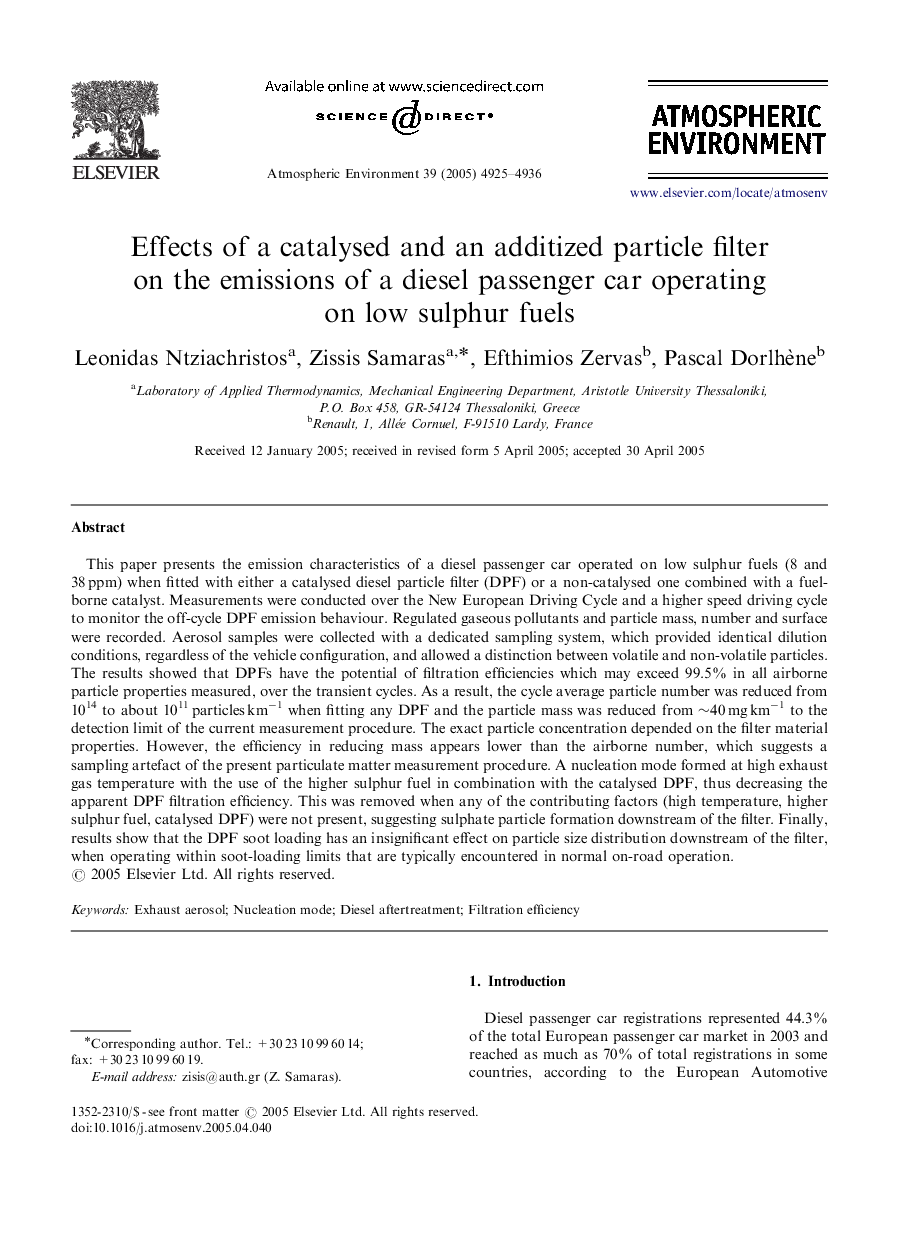| Article ID | Journal | Published Year | Pages | File Type |
|---|---|---|---|---|
| 4445084 | Atmospheric Environment | 2005 | 12 Pages |
This paper presents the emission characteristics of a diesel passenger car operated on low sulphur fuels (8 and 38 ppm) when fitted with either a catalysed diesel particle filter (DPF) or a non-catalysed one combined with a fuel-borne catalyst. Measurements were conducted over the New European Driving Cycle and a higher speed driving cycle to monitor the off-cycle DPF emission behaviour. Regulated gaseous pollutants and particle mass, number and surface were recorded. Aerosol samples were collected with a dedicated sampling system, which provided identical dilution conditions, regardless of the vehicle configuration, and allowed a distinction between volatile and non-volatile particles. The results showed that DPFs have the potential of filtration efficiencies which may exceed 99.5% in all airborne particle properties measured, over the transient cycles. As a result, the cycle average particle number was reduced from 1014 to about 1011 particles km−1 when fitting any DPF and the particle mass was reduced from ∼40 mg km−1 to the detection limit of the current measurement procedure. The exact particle concentration depended on the filter material properties. However, the efficiency in reducing mass appears lower than the airborne number, which suggests a sampling artefact of the present particulate matter measurement procedure. A nucleation mode formed at high exhaust gas temperature with the use of the higher sulphur fuel in combination with the catalysed DPF, thus decreasing the apparent DPF filtration efficiency. This was removed when any of the contributing factors (high temperature, higher sulphur fuel, catalysed DPF) were not present, suggesting sulphate particle formation downstream of the filter. Finally, results show that the DPF soot loading has an insignificant effect on particle size distribution downstream of the filter, when operating within soot-loading limits that are typically encountered in normal on-road operation.
